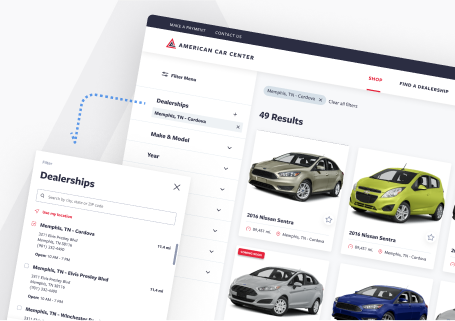Dark Patterns: Why You Don't Need To Join The Dark Side Of Ux Design
UX design is a lot like the Force from Star Wars. Invisible and omnipresent, it exists all around us, influencing how we feel and interact with the products and services we use daily.

Yoshitaka Shiotsu

UX design is a lot like the Force from Star Wars. Invisible and omnipresent, it exists all around us, influencing how we feel and interact with the products and services we use daily.
Like the Force, UX has a light side and a dark side. And the line between the two is finer than you’d think. This post will cover dark patterns, how they work, and why you don’t need to join the dark side of UX design.
So, what exactly is UX?
Far from being a single thing you could point to, UX is an emergent property of the various elements that make up an application's user interface (UI).
It takes a deep knowledge of human behavior to design the invisible, which is why UX designers take great pains to research and document user psychology and behavior. User personas, customer journeys, and user research provide the data to design layouts and user flows. In contrast, user testing allows them to optimize these designs to achieve certain results.
Dark Patterns in UX
Dark patterns, also known as dark UX, take advantage of user behavior and psychology to trick visitors into doing things they would not normally choose to do. Instead of playing the long game of staking your case, building your ethos, and convincing a lead to convert into a sale, dark patterns trick users into making purchases by exploiting browsing habits or preying on gambling tendencies.
An infamous example of this is the sheer number of hoops it takes to close your Amazon account:
To make matters worse, they constantly change their UX, so you’ll have to relearn how to navigate to the contact form needed to request an employee to close your account.
Types of dark patterns:
There are many different types of dark patterns found on the web. Here are some of the more common ones:
-
-
Sneak into Basket
-
Popular among shady e-commerce sites, additional items are snuck into your basket at purchase time. These items usually appear as add-ons like unnecessary user-warranties.
-
-
Roach Motel
-
Sites and apps that make it difficult to close accounts or cancel subscriptions.
-
-
Misdirection
-
Design purposefully draws your attention to one thing to distract you from another (e.g., faint information opt-out checkboxes).
-
-
Hidden Costs
-
Advertising a lower price sans hidden fees only visible at final checkout.
-
-
Forced Continuity
-
Free trials for premium subscription models that neglect to remind you when they come to an end, silently billing you monthly.
-
-
Harry Brignull, the UX specialist who originally coined the term dark patterns in 2010, runs a website called darkpatterns.org, which keeps a handy Hall of Shame to spread awareness of the worst practitioners of Dark UX.
Why do some designers turn to the dark side?
With human-centered design as a guiding philosophy, the UX designer’s primary goal is to design products that are a joy to use from the end-user's perspective.
But in practice, businesses are for-profit entities with profit-driven goals such as sales numbers and quarterly earnings reports.
The same user data that can be used to craft a tailor-made UX that caters to the needs of a target audience can also be used to exploit the audience's behavioral patterns. And therein lies the temptation.
In the never-ending quest for more clicks, subscribers, and sales, it’s too easy to fall prey to the allure of dark patterns. If you’ve ever struggled with subscription lists that are next-to-impossible to quit, false notification icons that get you to click, or pre-checked addons that try to get you to upsell on a purchase, you’ve experienced first-hand the dark patterns wielded by practitioners of Dark UX.
Why you shouldn’t turn to the dark side?
If the ethical dilemma of twisting human-centered design to your end wasn’t enough to dissuade you, it’s worth pointing out that dark patterns come with some significant cons.
Dark patterns aren’t just unethical; they also…
-
-
Frustrate your users and tarnish your brand.
-
Leads to higher customer churn.
-
Prioritize short-term gains over long-term success.
-
Prioritize vanity metrics over the UX metrics that would improve your apps and websites.
-
Dark patterns give you a false sense of the performance of your website and, by extension, your business. It’s possible to gain the clicks, followers, and sales you want with ethical, human-centered UX. Let’s take a look at the light side of UX design.
The light side: human-centered design
On the light side, we have human-centered design, a philosophy that places empathy for users at its core. White-hat UX designers use an iterative, feedback-driven design process to balance the needs of end-users, business stakeholders, and developers. The result is a product that meets business goals and satisfies users.
The table below summarizes the thematic differences between the light and dark sides of UX design:
|
HUMAN-CENTERED UX DESIGN |
DARK UX DESIGN |
|
Streamline user flows by removing the friction from performing the desired action. |
Obfuscates user flows by adding friction to performing an undesired action. |
|
Places choice in the hands of users. |
It uses the illusion of choice to obfuscate decisions and encourage a desired outcome. |
|
Provide users with all the information they need to make informed decisions. |
Withhold information in the hopes users will take the desired action. |
Even with all the information presented in this article, it can still be tricky to distinguish between standard conversion-rate optimization (CRO) best practices and dark UX design. When in doubt, step into the user's shoes and let your conscience be your guide.
Want to learn more about human-centered design? Check out our free ebook: The Essential Guide to Building Applications People Love.

UX best-practices consultation!
Review your product with our industry leaders today at no cost.
Table of Contents

UX best-practices consultation!
Review your product with our industry leaders today at no cost.




